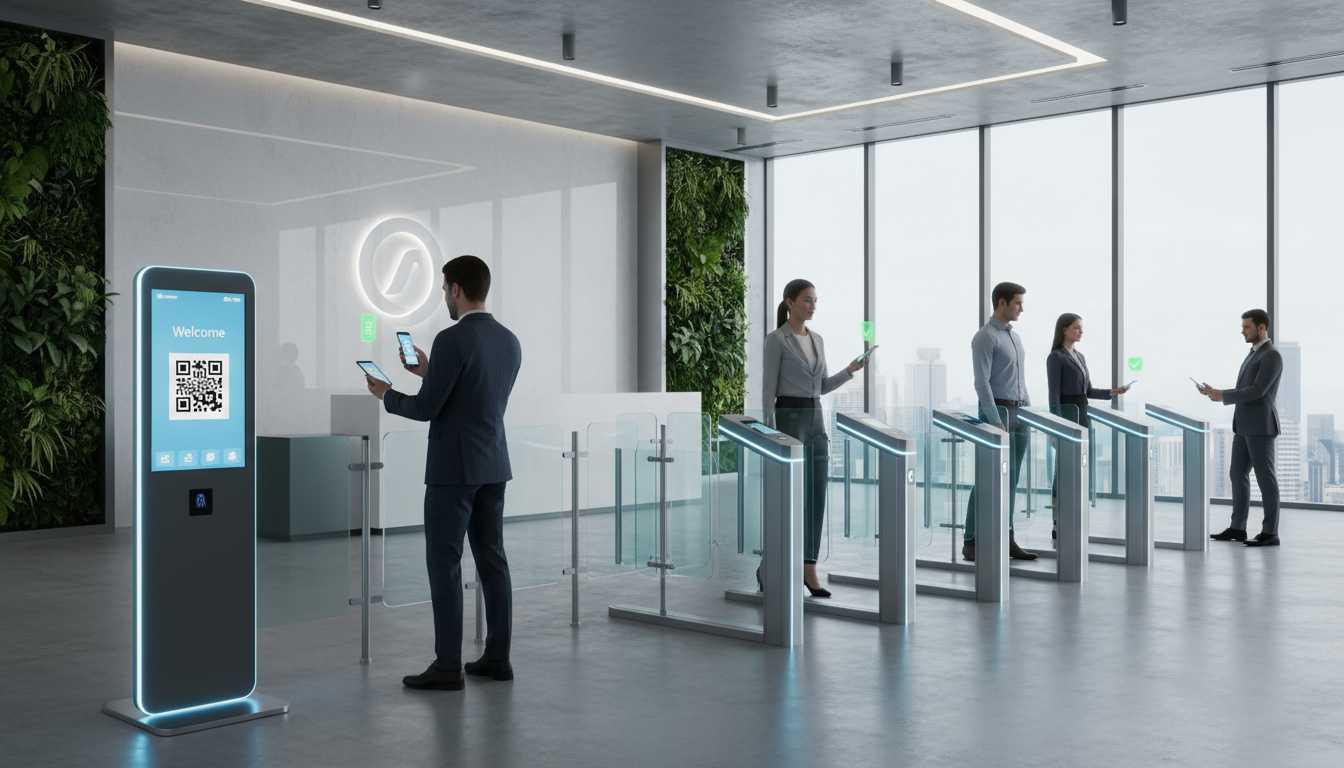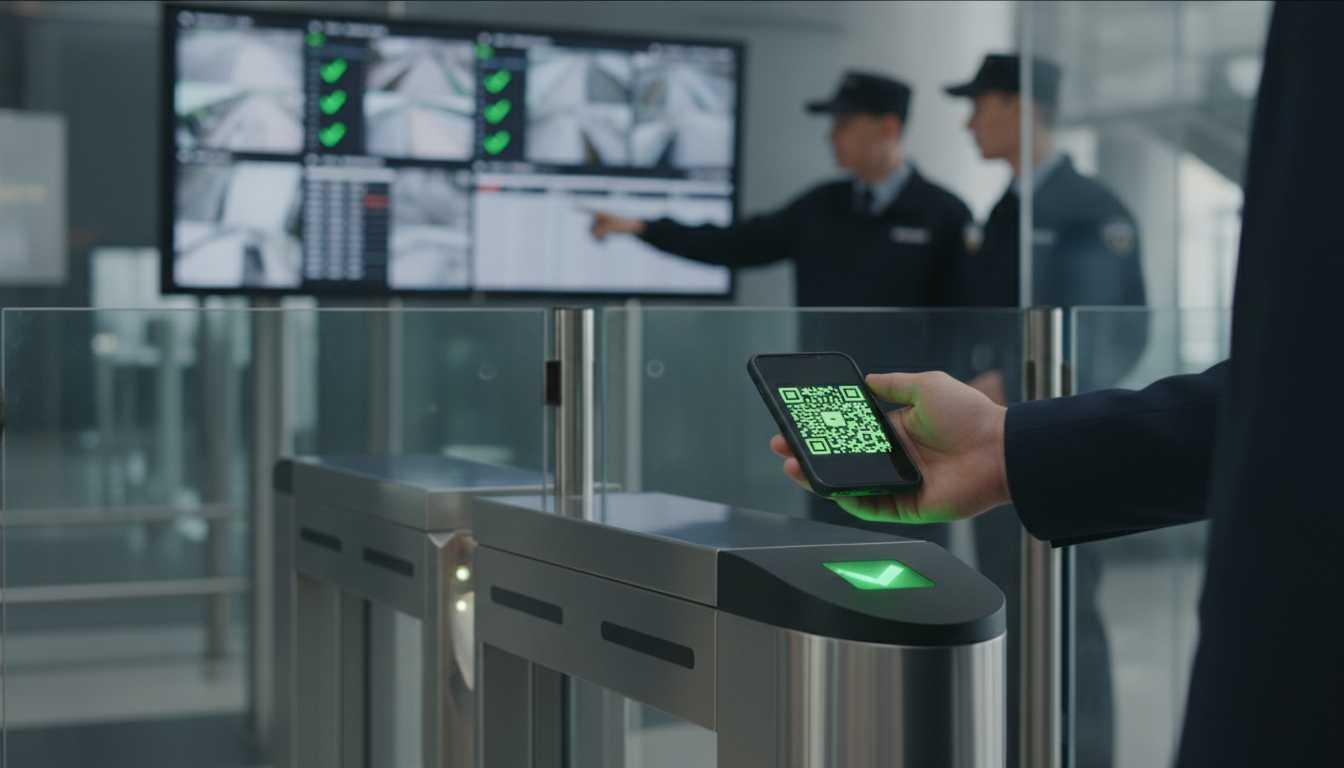
In today’s fast-evolving workplace environment, traditional visitor logs and paper badges are no longer sufficient to safeguard sensitive spaces. The increasing sophistication of security threats has prompted many organizations to rethink how they manage office access. Manual sign-in sheets and temporary ID cards often lead to inefficiencies and human errors, leaving room for unauthorized entry. With physical documents, data security becomes another major concern — information can be misplaced, mishandled, or exposed without proper tracking mechanisms.
Digital visitor management systems (VMS) have emerged as the modern solution to these challenges. These systems streamline the check-in process, allowing visitors to register digitally, receive QR-coded passes, and gain authorized access seamlessly. The use of cloud-based software ensures that every entry and exit is logged automatically, creating a verifiable digital record. Unlike physical logs, this data is encrypted, stored securely, and accessible only by authorized personnel, reinforcing the company’s commitment to compliance and confidentiality.
Transitioning to digital passes also enhances first impressions. Clients and partners visiting your office experience a smoother, more professional process that reflects your organization’s emphasis on innovation and efficiency. Beyond convenience, it also communicates that security is prioritized and embedded in the daily workflow — a subtle yet powerful signal that your workplace values both safety and technological progress.
How Digital Passes Improve Security and Accountability

Digital passes are not just convenient tools — they serve as a critical layer of protection against unauthorized access. Each digital pass is unique, time-bound, and often linked directly to a visitor’s pre-approved appointment or identity. This ensures that no one can reuse or forge a pass to gain entry. The integration of biometric verification and photo ID capture adds an extra dimension of security, confirming that the person entering the premises matches the registered credentials.
Furthermore, these systems create an audit trail that can be reviewed in real time. Security teams can instantly see who is on-site, when they arrived, and where they are authorized to go. This visibility drastically improves emergency preparedness, as administrators can quickly identify and locate visitors during evacuation scenarios or security incidents. Having a centralized database of visitor activity also allows organizations to detect patterns of irregular access, helping them proactively address potential vulnerabilities.
From an accountability standpoint, digital passes also reduce dependence on physical security staff for manual checks. Automated notifications alert employees when their guests arrive, minimizing unnecessary waiting time and confusion at reception. By leveraging technology, your organization ensures a well-documented, transparent, and traceable visitor experience that aligns with the best practices of corporate security governance.
Streamlining Access for Employees and Contractors

Digital passes are not limited to external visitors — they play a crucial role in managing employee and contractor access as well. Many modern workplaces host a variety of temporary staff, maintenance crews, and consultants who require controlled yet flexible entry. Issuing digital credentials to these individuals enables seamless movement within authorized zones while maintaining strict boundaries for sensitive areas. Passes can be customized based on role, duration, and security level, ensuring that access is always aligned with current permissions.
For example, a contractor might receive a digital pass valid for a week and restricted to certain floors or departments. Once the project is complete, the pass automatically expires, eliminating the risk of unintentional access in the future. This automation reduces administrative workload while tightening control over who can enter and exit the building. Additionally, integrating access control with HR and scheduling systems ensures real-time updates when employment statuses change, further minimizing risks associated with outdated permissions.
The convenience extends to employees as well. Digital staff IDs can double as access passes, integrating attendance systems, parking access, and even cafeteria payments into one secure platform. This not only enhances the user experience but also creates a unified data ecosystem that supports both operational efficiency and advanced security oversight.
Integrating Visitor Management with Broader Security Systems

The true potential of digital passes is realized when visitor management systems are integrated with the broader security infrastructure of the organization. By connecting digital access systems with surveillance cameras, alarm systems, and emergency response protocols, businesses can achieve a comprehensive approach to facility protection. For instance, when a digital pass is used at an entry point, surveillance systems can automatically log and record the event, providing a synchronized visual confirmation.
Integration also enhances the speed and accuracy of incident response. If a suspicious entry occurs, security teams can immediately cross-reference visitor data with camera footage and access timestamps. Automated alerts can notify administrators or security personnel in real time, enabling immediate intervention. Moreover, data analytics tools within integrated systems can identify trends — such as peak visitor times or repeated access attempts — allowing proactive adjustments to improve security and operational flow.
This unified approach ensures that no system operates in isolation. Instead, digital passes become the central link that ties together physical security, IT infrastructure, and administrative processes. By consolidating these systems, organizations not only strengthen their security framework but also gain valuable insights into optimizing workplace operations, resource allocation, and risk management strategies.
Building Trust Through Technology and Compliance

Security is not only about protection — it’s also about building trust. Clients, employees, and partners must feel confident that your organization values their safety and privacy. Implementing a digital visitor management system demonstrates a proactive approach to data protection, as it aligns with global compliance standards such as GDPR or ISO 27001. The system’s encryption protocols and secure data handling processes ensure that visitor information remains confidential and used strictly for authorized purposes.
Beyond regulatory compliance, digital passes reflect a culture of transparency and accountability. Each digital record contributes to a traceable history of access, which can be reviewed for audits or internal assessments. This traceability is invaluable for companies seeking certifications, risk insurance, or government contracts that require stringent security documentation.
Ultimately, the adoption of digital passes represents more than just a technological upgrade — it is a strategic investment in corporate integrity. It communicates to all stakeholders that your organization is forward-thinking, compliant, and deeply committed to ensuring a safe, efficient, and secure environment for everyone who steps through your doors.
RELATED POSTS
Why Modern Businesses Need a Visitor Management System
Introduction to Visitor Management Systems Modern businesses face increasing challenges in ensuring both efficiency and security within their operations. Visitor management systems (VMS) are no longer optional tools but essential components for any organization that...

